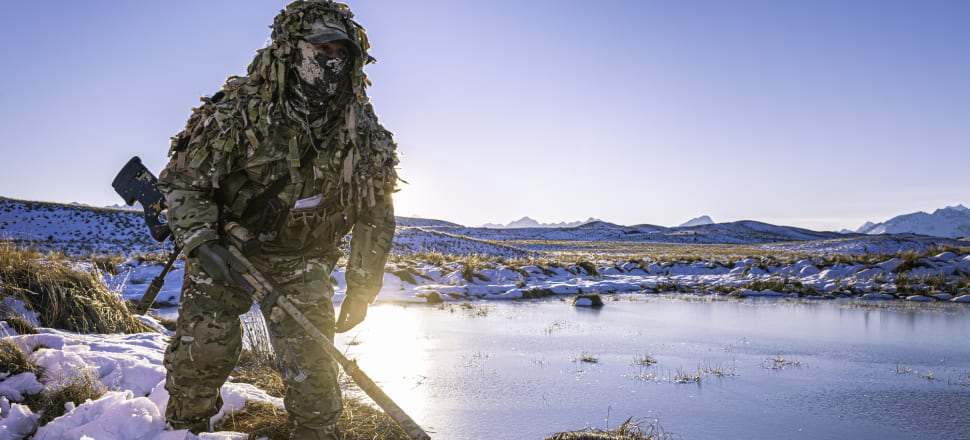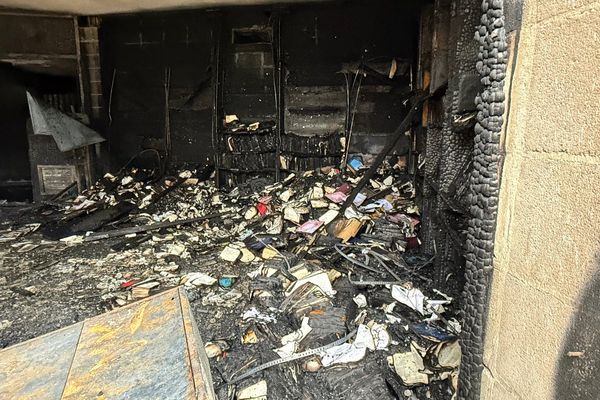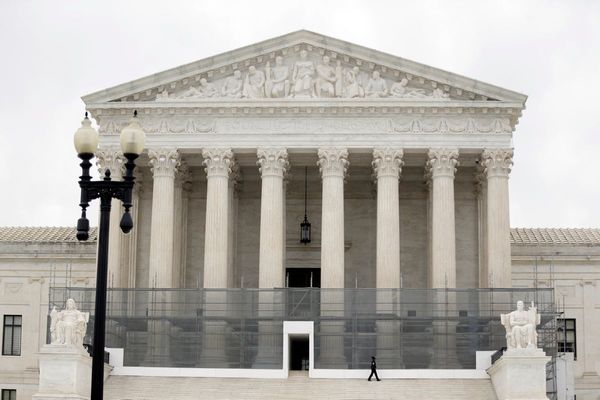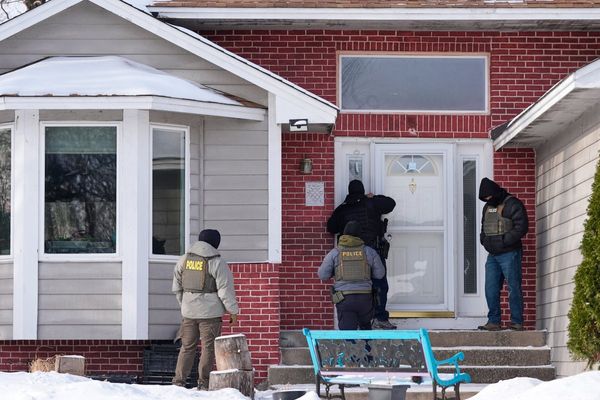
Two years on, a conservation agreement with the Defence Force isn’t inked. David Williams reports
It was, perhaps, a surprising tack-on.
In September 2020, just before the last general election, the Conservation Minister Eugenie Sage announced new areas of conservation land in the South Island’s fragile Mackenzie Basin, under the banner Tū Te Rakiwhānoa Drylands.
“I am delighted that the NZ Defence Force has added its support,” Sage said in a press statement. “The Defence Force will manage almost 15,000 hectares of the Tekapo military training area that it is responsible for, to protect their landscape and biodiversity values; for example through controlling wilding conifers, and ramping up predator control.”
The previous month, Defence chief Air Marshal Kevin Short endorsed the project in a letter written to Department of Conservation director-general Lou Sanson. Defence agreed in principle to the department’s proposal for “strengthening the relationship”, and committing “to work together to achieve greater protection of conservation and cultural values”.
More than two years later, however, a memorandum of understanding between the parties is yet to be signed.
“There has been an ongoing collaboration that has continued while the memorandum is being finalised, such as work relating to threatened galaxiid species and robust grasshopper monitoring,” Conservation’s acting Twizel operations manager Janine Sidery says.
“However, the memorandum, expected to be signed shortly, will formalise and increase this collaboration, benefiting both parties and the ecological values within the Tekapo military training area.”
The Defence Force doesn’t seem as definitive.
Estate strategy general manager Phil Gurnsey says it remains in discussions with Conservation, with areas of its training facility being “considered as candidates for inclusion” in Tū Te Rakiwhanoa Drylands.
The concept is highly complex and involves many parties, including iwi.
“Reaching agreement between the parties can be expected to take time, as all parties work to understand and accommodate the views and requirement of others,” Gurnsey says.
Christine Rose, agricultural campaigner for environmental lobby group Greenpeace, says the Mackenzie drylands are a unique and important ecosystem.
“Then-minister Sage made an announcement, and this sixth Labour government should deliver on that announcement – not delay doing what should have been done years ago,” Rose says in a statement.
“Every day of delay is disappointing for the flora and fauna that rely on a healthy environment in the Mackenzie country. It’s not too late: the Government must get this done.”
Ministerial priority
The origin of Tū Te Rakiwhanoa was a $2.6 million announcement by Sage in the 2018 Budget that turned into a “complete disaster”.
(According to Conservation, Tū Te Rakiwhānoa is a central figure to Ngāi Tahu stories “whose wairua [spirit] protects the plants and animals of this landscape and ensures the qualities of its waters”.)
The money was earmarked for better protection of the Mackenzie Basin’s unique landscapes and biodiversity, with a dryland park one of Sage’s ministerial priorities.
The impetus for protection is clear.
Research shows how agricultural intensification, often through Crown decisions, has changed the Mackenzie Basin.
The evidence is there for all to see, courtesy of giant pivot irrigators sweeping in a sea of green monoculture across what used to be undulating brown landscapes carved by glaciers.
A deadline of November 2019 was set for a Sage’s Mackenzie announcement.
A month out, however, the minister excoriated Conservation’s then boss, Sanson, for the lack of progress.
“There is no park,” she wrote. “My ministerial priority is about achieving genuine protection of dryland habitats; not manufacturing a ministerial announcement.”
The original project manager was dismissed, and an announcement date of April 2020 was nixed by Covid-19. What was announced in September of that year was not one of Sage’s top achievements as minister. (She was replaced after the 2020 election.)
“It wasn’t the full-bodied Basin floor park which we so desperately need,” she told Newsroom in January last year.
(As we reported back then, pulling together under one umbrella several tenure review proposals, tens of kilometres apart, was “a sign of how degraded the idea of a drylands park or area has become”.)
The external review that rated the project a “complete disaster” said it had “no chance of success in its current form”.
Tū Te Rakiwhanoa Drylands had abandoned its business case, lacked oversight, and achieved little.
Yet, the need for it is as important as ever, given fears over a huge expansion in irrigation, and warnings of inadequate planning protections.
Conservation’s agreement with the Defence Force has been given little attention compared to other, weightier issues, but the public might see confirmation an agreement hasn’t been signed as indicative of the department’s delays, and mis-steps in the Mackenzie.
In a response to Newsroom’s Official Information Act request, Eastern South Island operations director Jo Macpherson last month acknowledged “delays due to Tū Te Rakiwhanoa Drylands project reset and changes in staffing and capacity” delayed progress on the memorandum of understanding.
A draft had been written and shared, “and is currently being refined by both parties”, she said.
Slow-turning wheels
Internal DoC correspondence from November 2020, headed “next steps for Defence Force agreement”, set out how the department would seek a commitment to a “formal enduring agreement”.
Six months later, an internal update said: “This task was started but not completed.”
The draft MOU was sent to the Defence Force in June of this year.
Macpherson re-iterated in her October Official Information Act response: “Independent of the memorandum, the district have a good working relationship with local Defence Force on matters such as access for threatened species management.”
Gurnsey, the Defence Force’s estate strategy general manager, says: “NZ Defence Force remains committed to managing its land in the McKenzie in an environmentally sympathetic way that complies with our statutory obligations, and to that end commits an annual budget of around $500,000 to land management in the Tekapo training area.”
In the past 10 years, it has commissioned ecological surveys, including conditions of tussock grassland, shrubland and wetland, and indigenous lizards and robust grasshoppers.
Stepping back, labelling the Defence Force as some sort of environmental champion in the Tekapo military training area is curious given one of the biggest threats to conservation there is military training.
A January 2021 “task update” by Conservation’s Te Manahuna statutory project manager Jason Arnold, who left the project soon after, noted: “Concerns remain about the potential impacts of Defence activities on these biodiversity values.”
What’s at stake is underlined in the draft memorandum of understanding. The Mackenzie drylands are some of the most under-protected and threatened environments in Aotearoa, it says.
“The Basin floor represents the greatest area and diversity of historically rare ecosystems of any part of New Zealand.
“Within these iconic landscapes are hundreds of threatened and at-risk indigenous species of plants and animals. Many of these species are endemic to the Mackenzie Basin, or specific habitats within the Basin, or are dryland species within their national stronghold.”
The ecological surveys commissioned by Defence concluded the training area “contains a range of rare and threatened ecosystems with national significance”.
These ecosystems have been protected by the Defence Force through “preventing grazing, major land modification and management of fire risk”. Yet, the draft agreement says potential threats “exist from military training (use of munitions, vehicles & excavation)”.
How these threats are managed wasn’t clear back in June. The draft agreement said: “NZDF actively minimises these threats by (insert actions).”
Perhaps that touches on the sensitivity of such an agreement in such a sensitive area.







